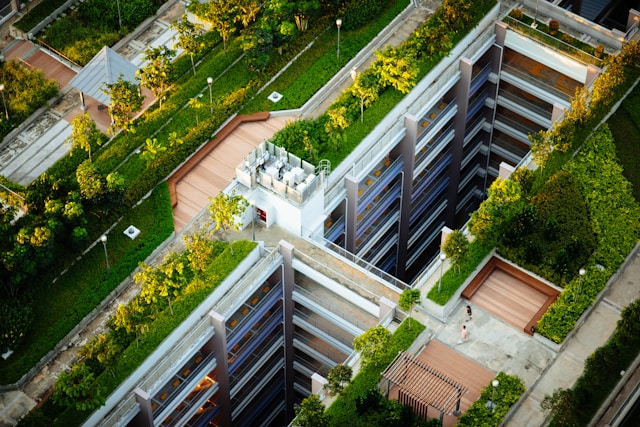As urban areas continue to expand, the importance of integrating green spaces into these dense environments has never been more pronounced. Urban green spaces, from sprawling parks to rooftop gardens, serve not only as crucial lungs for cities but also as essential components for the well-being of their inhabitants. This article explores the multifaceted benefits of urban green spaces, the challenges in creating and maintaining them, and innovative strategies cities are employing to green their landscapes amidst concrete and steel.
The Vital Role of Urban Green Spaces
Urban green spaces play a pivotal role in enhancing urban living in several key areas:
- Environmental Impact: They act as natural air filters, absorbing pollutants and producing oxygen. Green spaces contribute to biodiversity, offering habitats for various species within urban settings. They also play a significant role in mitigating the urban heat island effect, making cities more resilient to heatwaves.
- Physical Health: Access to green spaces encourages physical activity, whether it’s jogging in a park, cycling along green corridors, or simply walking in a leafy area. This accessibility can lead to reduced obesity rates and related health issues.
- Mental Well-being: The presence of greenery significantly lowers stress levels, enhances mood, and improves overall mental health. Natural settings offer a sanctuary for relaxation and escape from the urban hustle, promoting psychological restoration.
- Social Cohesion: Parks and gardens are communal spaces that foster social interactions and community engagement. They provide venues for activities, gatherings, and cultural events, strengthening community bonds.
Challenges in Urban Greening
Despite their benefits, the development and maintenance of urban green spaces face several challenges:
- Space Constraints: In densely populated cities, space is a premium commodity. Finding room for green areas often competes with commercial, residential, and infrastructural needs.
- Funding and Maintenance: Establishing and maintaining green spaces require significant financial investment. Cities often struggle with allocating sufficient funds for their development and upkeep, especially in times of economic hardship.
- Environmental Degradation: Pollution, invasive species, and climate change pose threats to the health and vitality of urban green spaces, requiring ongoing attention and adaptive management strategies.
Innovative Strategies for Urban Greening
Cities around the world are employing creative solutions to overcome these challenges:
- Vertical Gardens and Green Roofs: Utilizing vertical space on buildings for vegetation helps in reducing the urban heat island effect, improving air quality, and even providing food in the case of edible gardens.
- Pocket Parks: Transforming small, often unused parcels of land into mini-parks can introduce greenery into the most cramped urban environments.
- Green Corridors: Creating networks of green spaces that connect parks, rivers, and other natural areas enhance biodiversity and provide uninterrupted paths for both wildlife and people.
- Community Gardens: Encouraging community-managed gardens not only provides green space but also strengthens community ties and can address food insecurity by producing fresh produce.
The Future of Urban Green Spaces
As cities continue to grow, the integration of green spaces becomes increasingly critical for sustainable urban development. This requires a commitment from city planners, governments, and communities to prioritize green space development as an essential element of urban planning. By fostering innovation and collaboration, cities can transform into healthier, more vibrant, and more sustainable places to live.
In conclusion, urban green spaces are indispensable oases in the concrete jungle, offering environmental, health, and social benefits. As we face the challenges of urbanization and climate change, these green pockets play a crucial role in not only improving the quality of urban life but also in ensuring the resilience and sustainability of cities worldwide.





